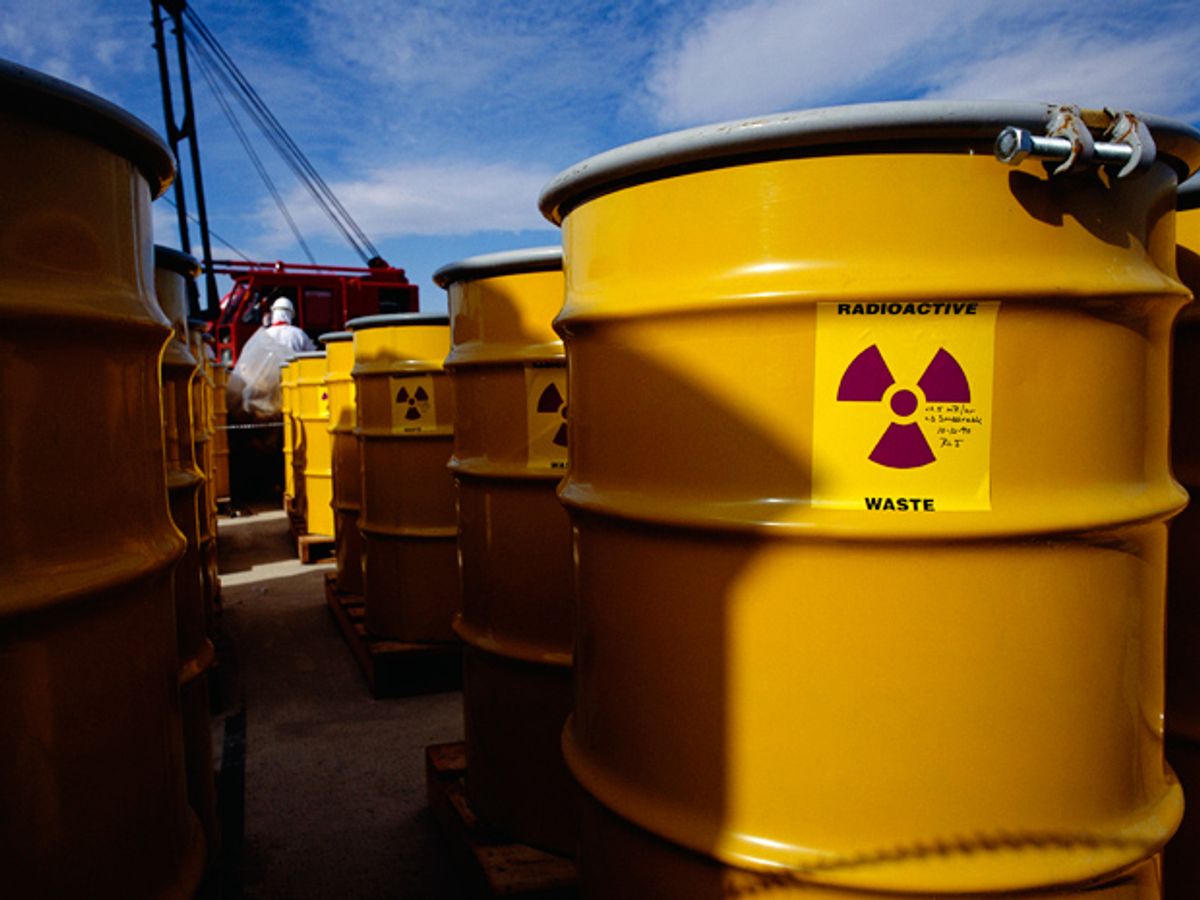All of Britain's high-level nuclear waste could be buried in just a few extremely deep holes, and the first U.S. field trials of this strategy may begin next year, researchers say.
Solving the problem of radioactive waste disposal is crucial to the future of nuclear power. At the moment, most countries dispose of high-level nuclear waste, such as the spent fuel from nuclear reactors, in relatively shallow repositories just 300 to 800 meters underground. However, researchers at the University of Sheffield, in England, do not think such depths are safe enough, because groundwater can circulate in this zone.
Deep borehole disposal, in contrast, involves using boreholes about five kilometers deep to store hundreds of packages of high-level nuclear waste. It takes advantage of decades of expertise and equipment developed for drilling for oil, gas, and geothermal energy. At such depths, what little groundwater there is has usually stayed there for millions of years and does not move far. Even if an accident happened, the Sheffield team suggest there would be no disastrous consequences for anyone above ground.
To ensure the success of deep borehole disposal, the researchers have designed a method to seal the hole completely to prevent radioactive material from returning to the surface. This involves melting a layer of granite over the waste, which has the same properties as natural rock after it solidifies.
They note that deep borehole disposal does not require huge sites—the holes are 60 centimeters wide at most, and can be positioned just a few dozen meters apart. They calculated that all of the U.K.'s high-level nuclear waste from the reprocessing of spent fuel could be disposed in six boreholes fitting within a site no larger than a soccer field.
A half-meter-wide demonstration borehole is now planned in the United States. Trials there in 2016 will seek to ensure that waste packages can be inserted into the borehole and recovered if required. The researchers calculated that 40 percent of the hottest, most radioactive waste in the United States—left over from plutonium production and currently stored in Hanford, Wash.—could be disposed of in a single borehole. A 2008 U.S. Department of Energy report suggested that 650 to 1,300 boreholes could dispose of the 130,000 metric tons of spent nuclear fuel expected to exist in the United States in 2070.
The Sheffield scientists presented their latest findings last week at the American Nuclear Society International High-Level Radioactive Waste Management conference, in Charleston, S.C.
Charles Q. Choi is a science reporter who contributes regularly to IEEE Spectrum. He has written for Scientific American, The New York Times, Wired, and Science, among others.



